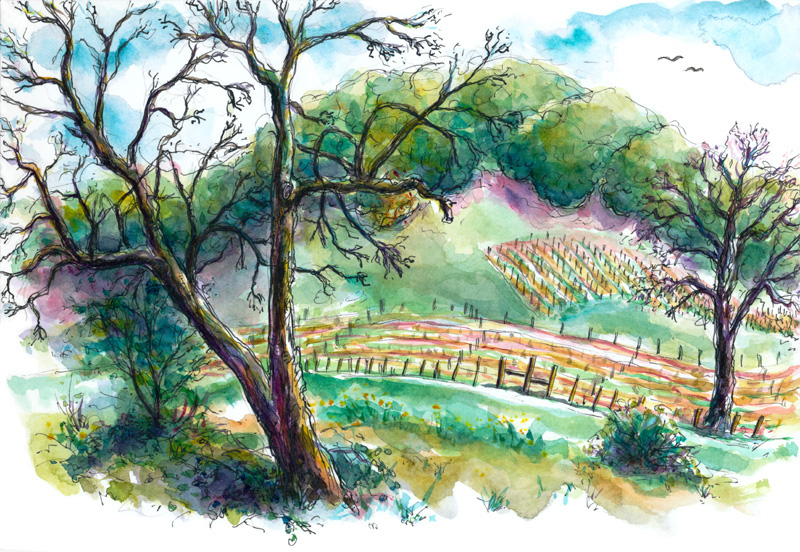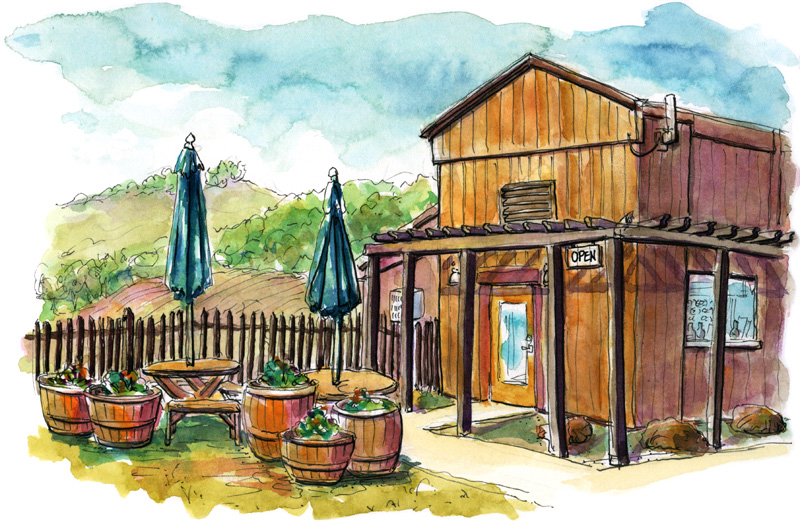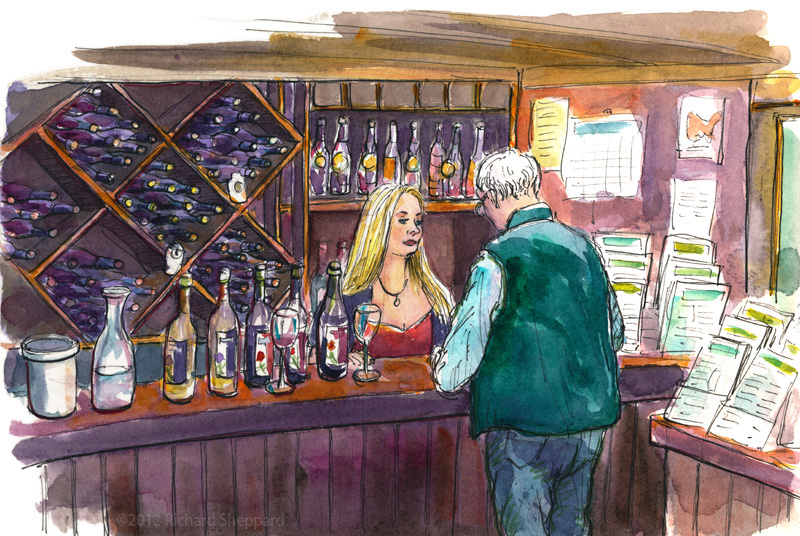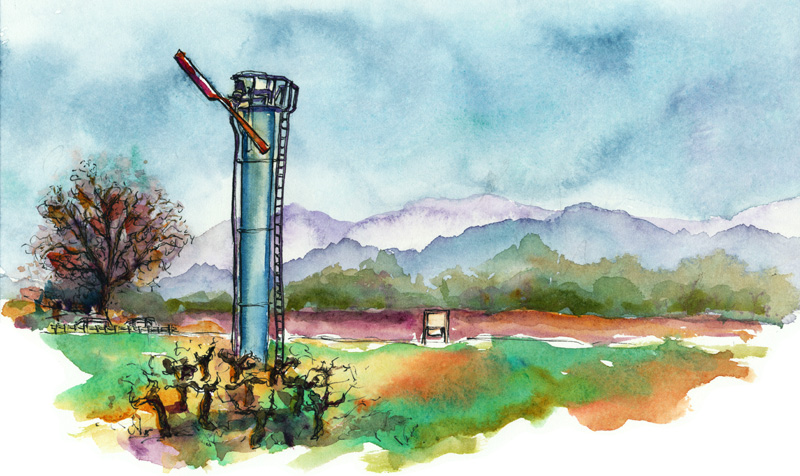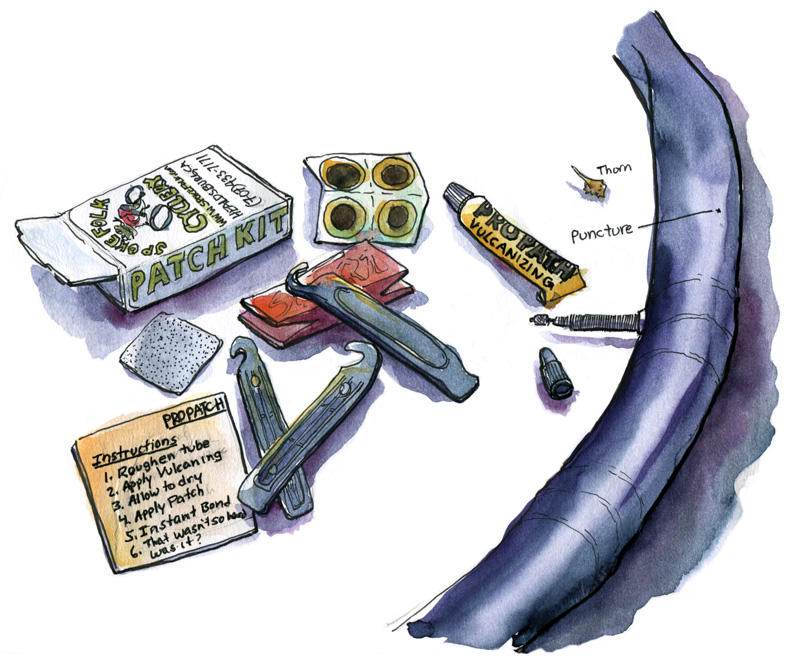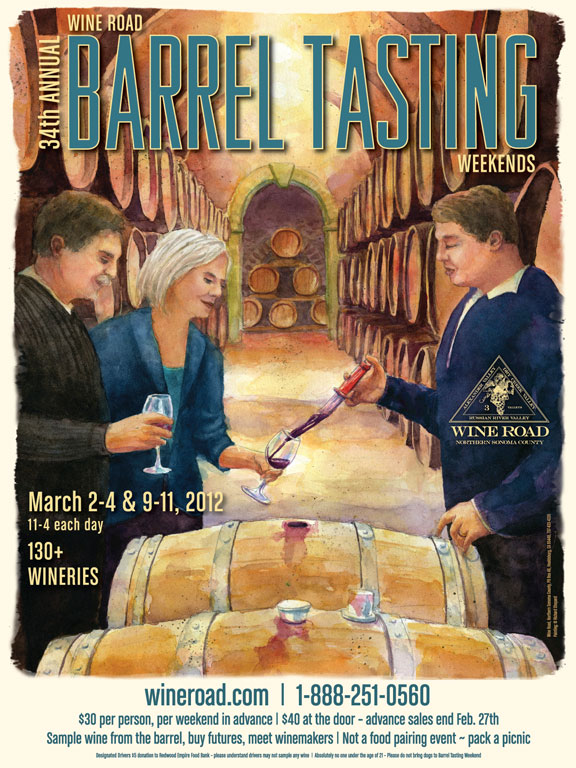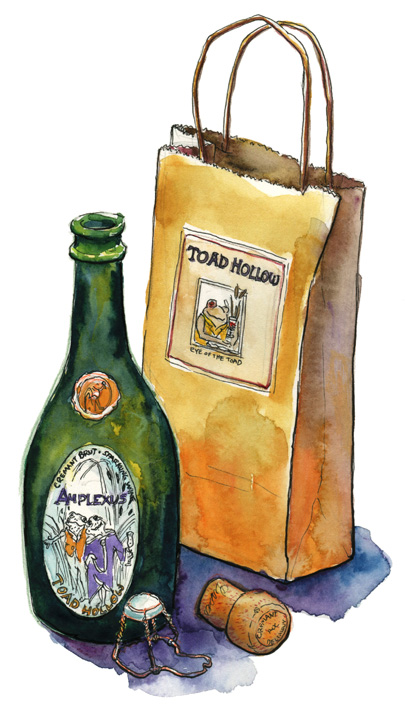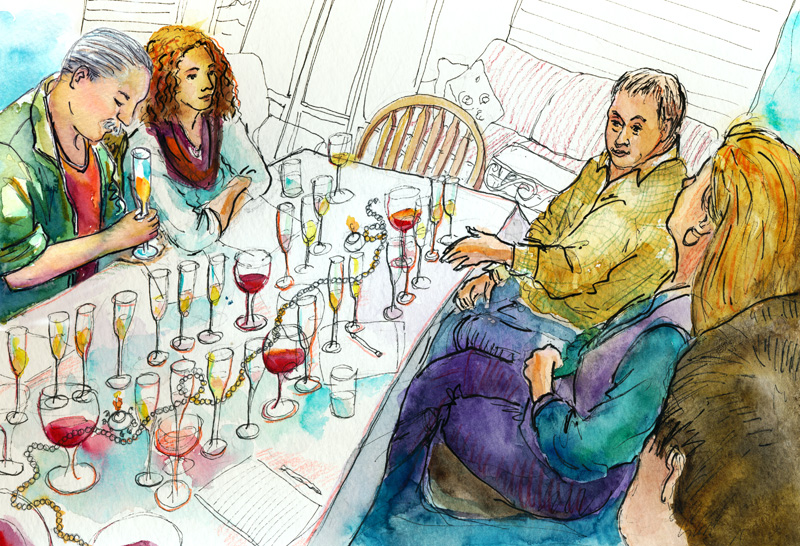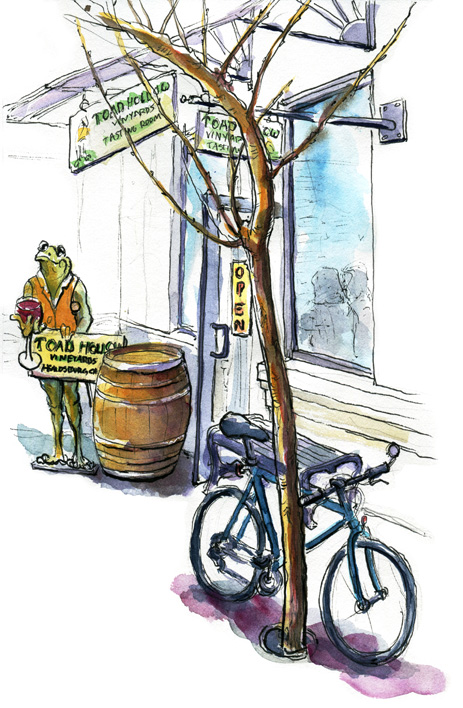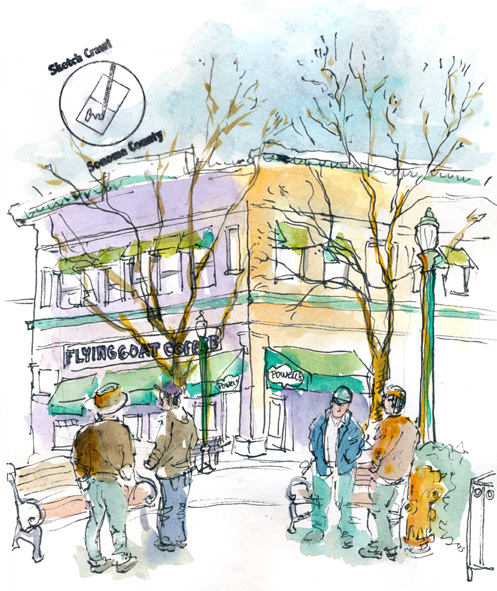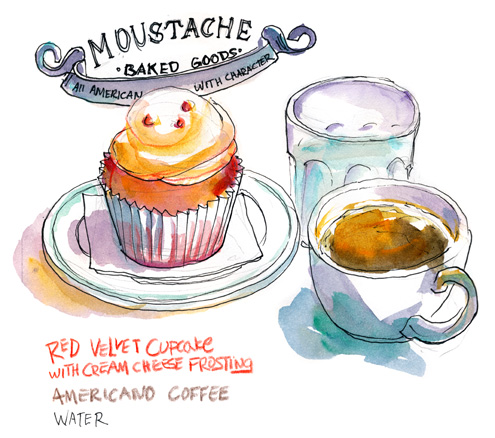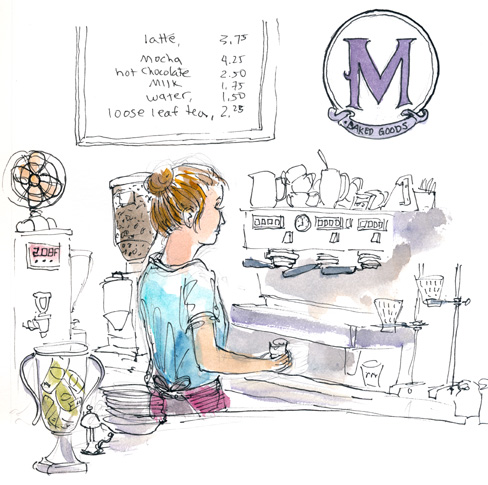I have painted this place once before. The previous occasion was last fall, when vineyard leaves had dried to blazing yellows and reds. The grasses were still dormant from the dry summer season, and the pear tree’s leaves had gone gold. Today, in February, all that’s left are dark brown vine trunks with white and yellow cover crops filling in between the rows.
The pear tree, like the vineyards, looks like a skeleton of a once-living thing. But in contrast to the vines, the tree is in such a state of decay as to appear dead. I know better, though, after watching it produce buds, flowers, then fruit, year after year.
This winter has been unusually dry as most clouds waft by overhead without a drop. The occasional rainfall has kept the earth from completely parching, and at times like this, after we’ve had a few rains, nature can relax from her struggle for moisture.
Wild plants and grasses that dried into sticks and stubs are growing new shoots, turning the fields emerald green. Deer, jackrabbits, and other wild animals that had resorted to feeding upon domestic plants like rose bushes, much to gardeners’ dismay, may now dine on fresh shoots, tiny wildflowers and mushrooms.
While painting this scene in my sketchbook, I notice how different my color palette is today from that of last autumn. What was violet is now blue, and yellows have turned green. The rejuvenated landscape coupled with low sunlight makes what I capture on paper appear quite different.
Hearing a screech from above, I look up to see two hawks circling. As I pause to watch their graceful flight, velvety gray clouds move inland from the Pacific, blocking the sun’s warmth. A winter storm is on its way and the air feels heavy with moisture. This time, I think it’s actually going to rain.
